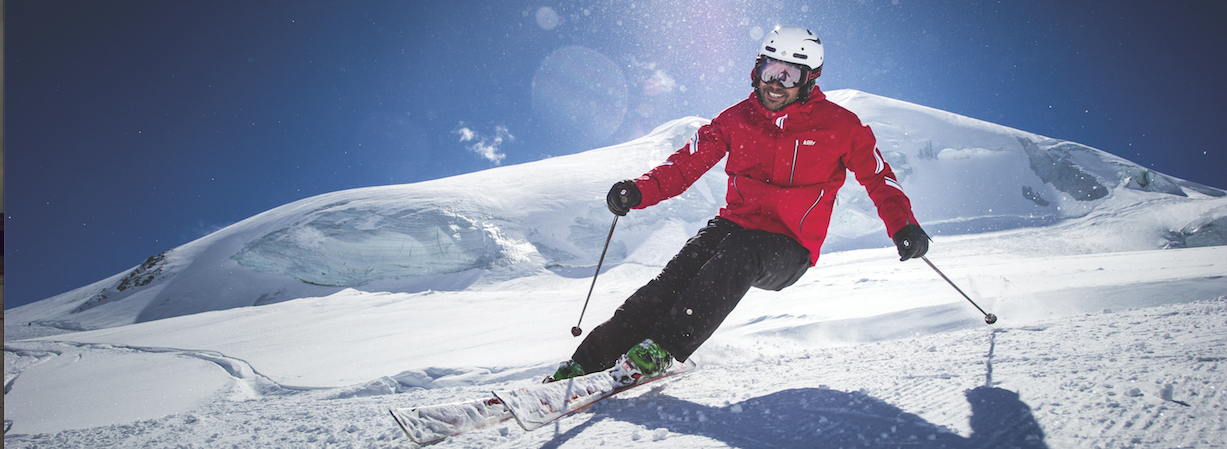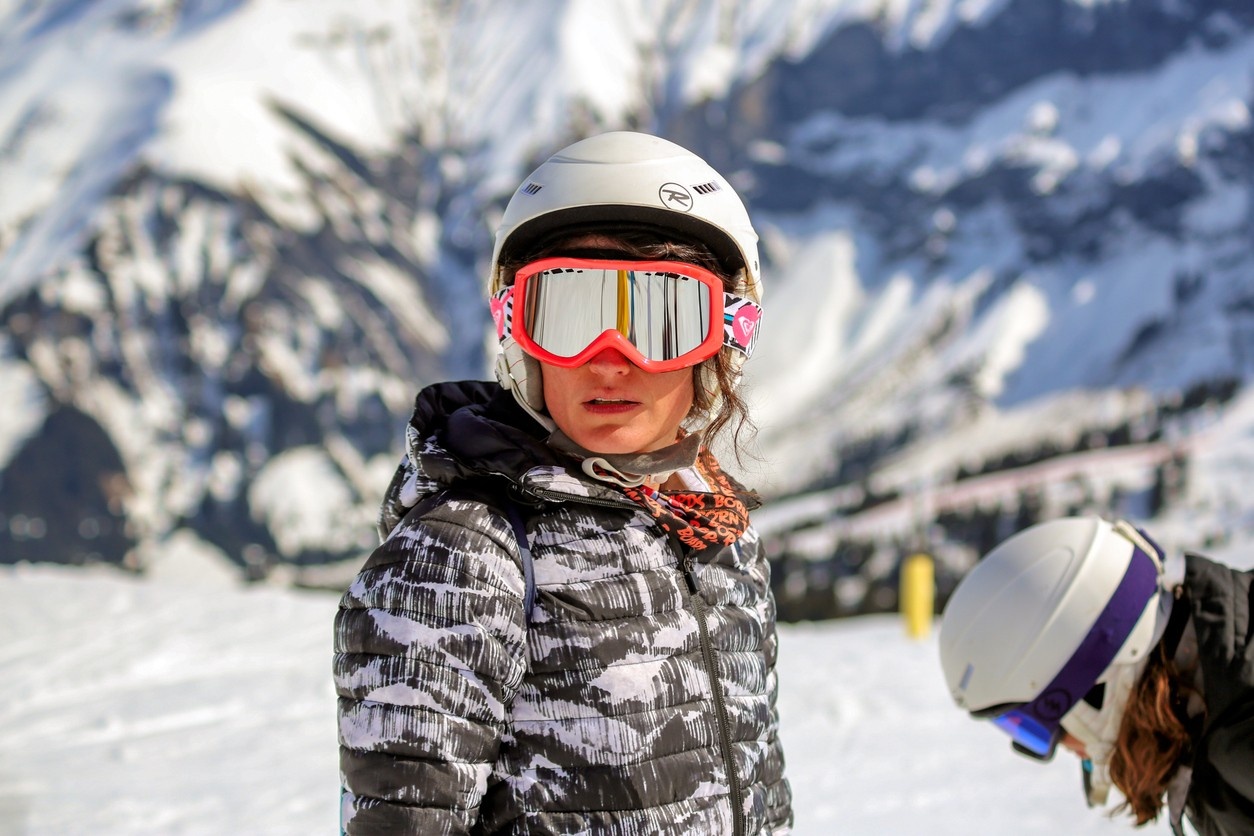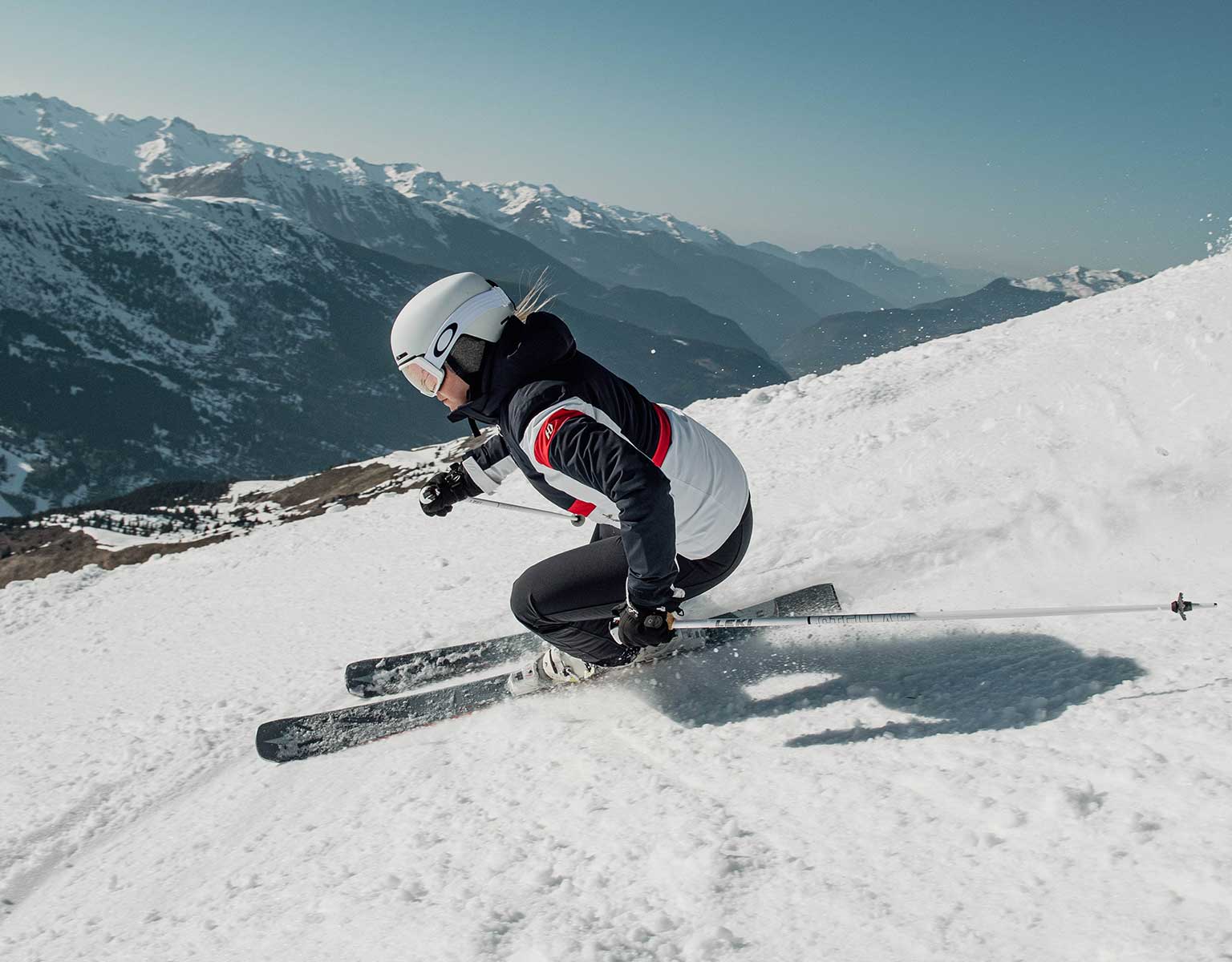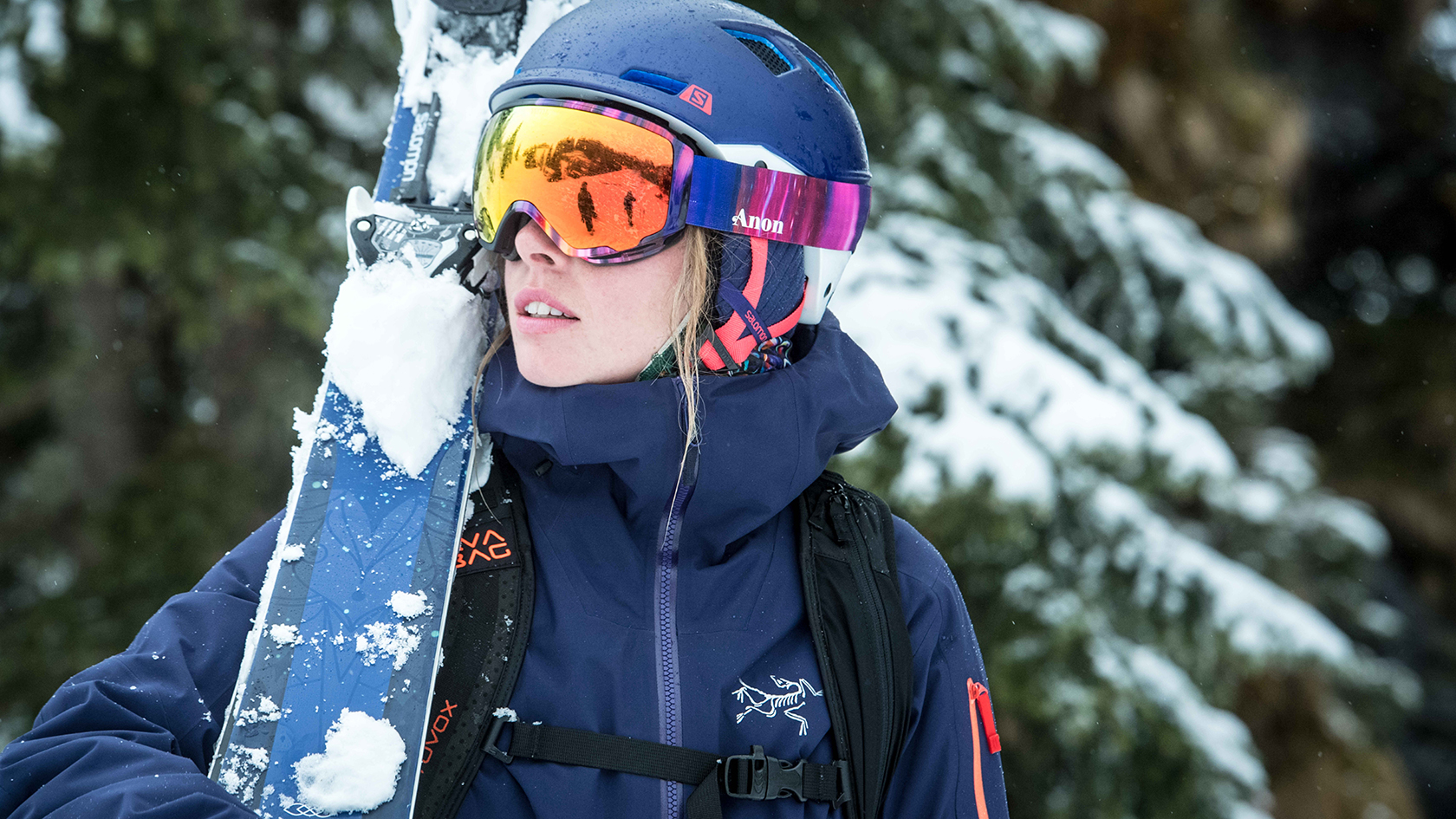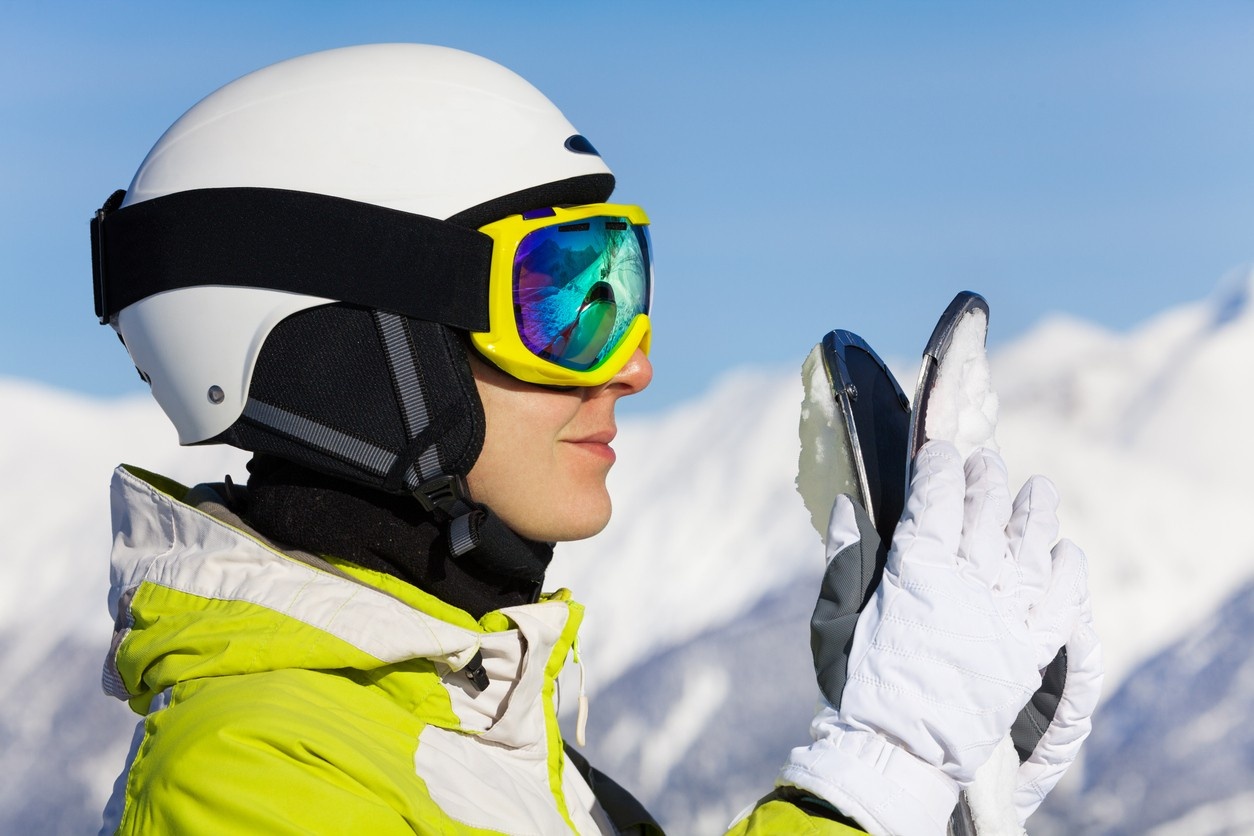When it comes to hitting the slopes, there's nothing quite like the exhilaration of carving through fresh powder, taking in the breathtaking mountain views, and feeling the crisp, cool air on your face. However, amidst all the excitement, it's crucial not to overlook the importance of safety. This is where ski helmets come into play: they are your essential companion for thrilling mountain adventures, providing the protection you need to enjoy your time on the slopes fully.
Ski helmets have come a long way in recent years, offering superior protection and a range of features designed to enhance your overall skiing experience. From integrated visors and adjustable ventilation to sleek, aerodynamic designs, there's a ski helmet out there to suit every skier's needs and preferences. Whether you're a seasoned pro or a beginner just starting, investing in a high-quality ski helmet is one of the best decisions you can make for your safety and comfort on the mountain.
What are the different types of ski helmets?
Hardshell Helmets
Hardshell helmets are the traditional style of ski and snowboard helmets, known for their durability and robust protection. They feature a tough outer shell, typically made from ABS plastic, which is bonded to an inner foam liner made of expanded polystyrene (EPS). This construction method offers excellent protection against impacts and is resistant to everyday knocks and dings.
Key features of hardshell helmets include:
- Durable ABS plastic outer shell for impact resistance
- EPS foam inner liner for energy absorption
- Robust protection against falls and collisions
- Less susceptible to damage from daily wear and tear
- Ideal for skiers and snowboarders who prioritise durability
However, hardshell helmets tend to be heavier and bulkier than their in-mould counterparts, which can affect comfort during long days on the slopes. They also typically offer less ventilation, which may lead to overheating in warmer conditions.
In-Mould Helmets
In-mould helmets are a more modern construction method that has gained popularity in recent years. These helmets feature a thin, tough polycarbonate outer shell that is injection-moulded directly onto the EPS foam inner liner. This process creates a lightweight, low-profile helmet with improved ventilation and a sleek, modern appearance.
Important characteristics of in-mold helmets include:
- Lightweight construction for improved comfort
- Thin polycarbonate outer shell for impact dispersion
- EPS foam inner liner for energy absorption
- Improved ventilation for temperature regulation
- Sleek, low-profile design for a modern look
- Ideal for skiers and snowboarders who prioritise comfort and style
While in-mould helmets offer excellent protection, they may be more susceptible to cosmetic damage from daily wear and tear compared to hardshell helmets.
ABS Helmets
ABS (Acrylonitrile Butadiene Styrene) helmets are a type of hardshell helmet that utilises an ABS plastic outer shell. ABS is a durable, impact-resistant material that provides excellent protection against falls and collisions. These helmets are known for their longevity and ability to withstand the rigours of skiing and snowboarding.
Key features of ABS helmets include:
- Tough ABS plastic outer shell for superior impact resistance
- EPS foam inner liner for energy absorption
- Excellent durability and longevity
- Resistant to everyday knocks and dings
- Ideal for skiers and snowboarders who demand the highest level of protection
However, like other hardshell helmets, ABS helmets may be heavier and less ventilated than in-mould designs, which can affect comfort during extended use.
Hybrid Helmets
Hybrid helmets combine the best features of both hardshell and in-mould construction methods. These helmets typically feature an ABS plastic upper shell for superior impact protection and an in-mould lower shell for improved ventilation and lighter overall weight.
Important characteristics of hybrid helmets include:
- Combines the durability of ABS plastic with the lightweight construction of in-mold design
- ABS upper shell for impact resistance in critical areas
- In-mould lower shell for improved ventilation and weight reduction
- Balanced protection, comfort, and style
- Ideal for skiers and snowboarders who want the best of both worlds
Hybrid helmets offer a compelling compromise between the protection of hardshell helmets and the comfort and style of in-mould designs.
Full Shell Helmets
Full shell helmets, also known as full coverage helmets, offer the most comprehensive protection for skiers and snowboarders. These helmets feature a hard outer shell that extends down to cover the ears and back of the head, providing additional protection against impacts from all angles.
Key features of full-shell helmets include:
- Maximum coverage for the head, ears, and back of the neck
- Hard outer shell, usually made from ABS plastic, for superior impact resistance
- EPS foam inner liner for energy absorption
- Ideal for racers, freestyle skiers, and snowboarders who demand the highest level of protection
- Also well-suited for children and beginners who are more prone to falls
While full-shell helmets offer unparalleled protection, they may be heavier and less ventilated than other helmet styles, which can affect comfort during long days on the slopes.
Full Face Helmets
Full-face helmets are the ultimate protection for skiers and snowboarders. These helmets feature a hard outer shell that covers the entire head, including the face and chin, much like a motorcycle helmet. Full-face helmets are designed for extreme skiing and snowboarding, where the risk of high-speed impacts and collisions is greatest.
Important characteristics of full-face helmets include:
- Maximum protection for the entire head, face, and chin
- Hard outer shell, usually made from ABS plastic or fibreglass, for superior impact resistance
- EPS foam inner liner for energy absorption
- Integrated chin guard for additional protection
- Ideal for extreme skiers and snowboarders, such as those participating in big mountain or freeride events
Full-face helmets offer the highest level of protection available but may be less ventilated and more restrictive than other helmet styles. They are primarily used by advanced skiers and snowboarders who engage in high-risk activities.
How Should a Ski Helmet Fit?
A properly fitting ski helmet is crucial for both comfort and safety on the slopes. When trying on a helmet, make sure to follow these guidelines to ensure the best fit:
- The helmet should sit level on your head, covering your forehead and the top of your ears. It should not tilt back, exposing your forehead, or sit too low, obstructing your vision.
- There should be no gaps between the helmet and your head. The padding should be in contact with your head all the way around, without any pressure points or tight spots.
- The chin strap should be adjusted so that it sits snugly under your chin, with enough room to fit one or two fingers between the strap and your skin. A loose chin strap can allow the helmet to shift or come off in the event of a fall.
- When the chin strap is fastened, try gently rocking the helmet from side to side and front to back. If it fits properly, the helmet should move with your skin, not slide around on your head.
- Wear the helmet for a few minutes to ensure it remains comfortable. If you experience any discomfort, pressure points, or headaches, try a different size or model.
Keep in mind that helmet sizes can vary between brands, so always refer to the manufacturer's size chart and measuring instructions. If you're between sizes, opt for the smaller size, as helmets tend to pack out slightly with use.
It's also important to consider the type of fit system the helmet uses:
- Foam pads — Some helmets come with removable foam pads of varying thicknesses that can be swapped out to customise the fit. This system is generally less expensive and allows for easy adjustment if you plan to wear a beanie or balaclava under your helmet.
- Dial or slider adjustment — Many helmets feature a dial or slider at the back that tightens or loosens an internal band, allowing you to fine-tune the fit. This system is quick and easy to use, even with gloves on.
- BOA system — High-end helmets often use a BOA fit system, which consists of a cable that wraps around the inside of the helmet and is tightened or loosened using a dial. This system provides a precise, evenly distributed fit and is highly adjustable.
By taking the time to find a helmet that fits properly, you'll ensure optimal comfort, protection, and performance on the slopes.
Should I buy my own ski helmet?
Investing in your own ski helmet is highly recommended for several reasons:
Safety — A well-fitting, properly maintained helmet is essential for protecting your head in the event of a fall or collision. Renting a helmet may not provide the same level of protection, as it may be worn out, damaged, or improperly sized.
Hygiene — Rental helmets are worn by numerous people throughout the season, which can raise concerns about cleanliness and the potential spread of germs. Owning your helmet ensures that you're the only one using it, reducing the risk of exposure to harmful bacteria or viruses.
Comfort — A helmet that fits correctly and is adjusted to your specific head shape will be much more comfortable to wear throughout the day. Rental helmets may not offer the same level of customisation, leading to pressure points, headaches, or discomfort.
Cost-effectiveness — While purchasing a helmet requires an initial investment, it can be more cost-effective in the long run, especially if you ski frequently. Renting a helmet for multiple days or over several trips can quickly add up, potentially exceeding the cost of buying your own.
Compatibility — Owning your helmet allows you to ensure proper compatibility with your goggles, creating a seamless fit that prevents cold air and snow from entering the gap between the helmet and goggles.
Style — With your own helmet, you can choose a design and colour that suits your style and matches your other ski gear.
When selecting a helmet, consider your skill level, the type of skiing you'll be doing (resort, backcountry, or park), and your budget. Opt for a helmet that meets safety certifications, such as CE EN1077 (Europe) or ASTM F2040 (US), and choose a model with features that suit your needs, such as adjustable ventilation, audio compatibility, or MIPS technology for added protection against rotational forces.
While renting a helmet may be a convenient option for occasional skiers or those trying the sport for the first time, investing in your helmet is a wise choice for regular skiers who prioritise safety, comfort, and hygiene on the slopes.
Features and Trends in Ski Helmets
In the world of ski helmets, innovation and style go hand in hand with safety and functionality. As technology advances and skiers' preferences evolve, helmet manufacturers are constantly pushing the boundaries to create products that not only protect your head but also enhance your overall skiing experience. From integrated visors and goggle compatibility to cutting-edge safety technologies and audio systems, the latest trends in ski helmets offer a wide range of features designed to cater to every skier's needs and preferences.
Integrated Visors
One of the most popular trends in ski helmets is the integration of visors, which provide a seamless, goggle-free experience. Ski helmets with visors offer a wide field of vision, excellent protection from the elements, and a streamlined look that many skiers find appealing. Brands like Oakley, Giro, and Salomon have all embraced this trend, offering a range of ski helmets with visors that cater to different styles and preferences.
Goggle Compatibility
For those who prefer the traditional goggle setup, there are plenty of ski helmets designed to accommodate your favourite pair of goggles. Look for helmets with adjustable vents that allow you to control airflow and prevent fogging, as well as a secure goggle strap to keep your goggles in place throughout your runs. Many top brands, such as Smith and Bolle, offer ski helmets that seamlessly integrate with their goggle lines, ensuring a perfect fit and optimal performance.
MIPS Technology
MIPS, which stands for Multi-Directional Impact Protection System, is a revolutionary technology found in many ski helmets. It introduces a groundbreaking concept that focuses on safeguarding your head from all angles and consists of a low-friction layer within the helmet that allows the outer shell to rotate slightly upon impact. Here's the genius behind it: In the event of an impact, this layer enables the outer shell to rotate slightly. This added movement helps reduce rotational forces transmitted to the head during a crash, reducing the risk of brain injuries. By doing so, MIPS significantly lowers the risk of severe brain injuries. In essence, MIPS technology offers a remarkable enhancement in helmet safety, making it an invaluable feature for skiers concerned about their well-being on the slopes.
Audio Systems
For those who enjoy listening to music on the slopes, some helmets come equipped with built-in audio systems or earpiece pockets for headphones. These features allow you to enjoy your favourite tunes while staying safe and connected. Helmets equipped with built-in audio systems often have integrated speakers and controls, allowing you to connect your music device via Bluetooth or auxiliary cable. This setup ensures that your tunes are just a button press away, conveniently integrated into your skiing experience. Alternatively, some helmets feature specialised pockets or channels designed to accommodate earpieces or headphone wires. These thoughtful designs maintain a tidy and streamlined appearance while keeping your headphones securely in place during your downhill adventures.
Fit, Comfort, and Safety
A properly fitting helmet is crucial for both safety and comfort. A helmet that is too loose or too tight can compromise its ability to protect your head in the event of an impact, and can also cause discomfort and distraction while you're skiing.
Safety standards and certifications are another critical aspect of choosing a ski helmet. Different regions have their safety standards, such as CE EN 1077 in Europe, ASTM F2040 in the United States, and CSA Z263.1 in Canada. We'll break down these standards and explain what they mean for helmet safety, so you can make an informed decision when selecting your helmet. In addition to fit and safety certifications, many ski helmets offer additional protection features that can enhance your comfort and performance on the slopes. From removable, moisture-wicking liners to built-in ear pads and chin guards, these features can help keep you warm, dry, and protected in a variety of weather conditions.
Achieving the Perfect Fit
When it comes to choosing the right ski helmet, fit and comfort are key. A well-fitting helmet should be snug but not too tight, with no pressure points or gaps. Many ski helmets feature adjustable sizing systems that allow you to fine-tune the fit, ensuring maximum comfort and protection. It's also essential to consider the helmet's weight and ventilation, as a lightweight, well-ventilated helmet will help keep you cool and comfortable during long days on the slopes.
Safety Standards and Certifications
Safety should always be the top priority when selecting a ski helmet. Look for helmets that meet or exceed safety standards, such as those set by the European Committee for Standardisation (CEN) or the American Society for Testing and Materials (ASTM). These certifications ensure that the helmet has undergone rigorous testing and meets strict safety requirements, giving you peace of mind as you tackle the mountain.
CE EN 1077 (Europe)
- Class A: More coverage, higher impact protection
- Class B: Less coverage, lower impact protection
ASTM F2040 (US)
- Requires positional stability and strength retention tests
- Tested to a lower impact level than CE EN 1077
Snell RS-98
- Considered the most stringent ski helmet safety standard
- Features higher impact standards and a standard for chin bars
CSA Z263.1 (Canada)
- Similar to CE EN 1077 Class A, with less strict impact tests
- Requires third-party certification
CPSC (US)
- A US government standard, less common for ski helmets
Additional Protection Features
In addition to protecting your head, ski helmets can also help keep you warm and dry in challenging weather conditions. Many helmets feature removable, washable liners that wick away moisture and provide insulation, while others offer built-in ear pads for added warmth and comfort. Some ski helmets even come with removable chin guards, providing extra protection for your face in cold or windy conditions.
Top Ski Helmet Brands
When it comes to choosing a ski helmet, there are several reputable brands known for producing high-quality, safe, and comfortable options. Here are some of the top ski helmet brands to consider:
- Bolle — This French company has been creating ski helmets since 1960 and is known for its innovative designs and advanced safety features. Bolle helmets often incorporate MIPS technology and offer a range of styles to suit different preferences and needs.
- Giro — Giro is a well-established brand in the world of snow sports, offering a wide selection of ski helmets for men, women, and children. Their helmets are known for their exceptional fit, ventilation, and integration with Giro goggles.
- Marker — With a focus on safety and performance, Marker ski helmets feature advanced technologies like MAP (Multi-Impact Adaptive Polymer) and RTS (Rotational Technology System) to provide enhanced protection against impacts.
Oakley — Better known for their eyewear, Oakley also produces high-quality ski helmets that seamlessly integrate with their goggles. Oakley helmets often feature BOA fit systems and MIPS technology for a secure, customised fit and added safety.
- Salomon — Salomon is a trusted name in the ski industry, and their helmets are no exception. Offering a range of styles and features, Salomon helmets are known for their exceptional fit, ventilation, and compatibility with Salomon goggles.
- Scott — Scott has been producing ski gear since 1958 and is known for its innovative designs and high-quality products. Scott helmets often feature MIPS technology and adjustable ventilation systems for added safety and comfort.
- Smith — Smith is another well-respected brand in the world of snow sports, offering a wide range of ski helmets for different needs and preferences. Smith helmets are known for their exceptional fit, ventilation, and integration with Smith goggles.
- Sweet Protection — This Norwegian company is dedicated to creating high-performance, protective gear for action sports. Sweet Protection ski helmets are known for their advanced safety features, including MIPS technology and innovative shell designs.
Related Articles

Let us know you agree to cookies
We use marketing, analytical and functional cookies as well as similar technologies to give you the best experience. Third parties, including social media platforms, often place tracking cookies on our site to show you personalised adverts outside of our website.
We store your cookie preferences for two years and you can edit your preferences via ‘manage cookies’ or through the cookie policy at the bottom of every page. For more information, please see our cookie policy.

